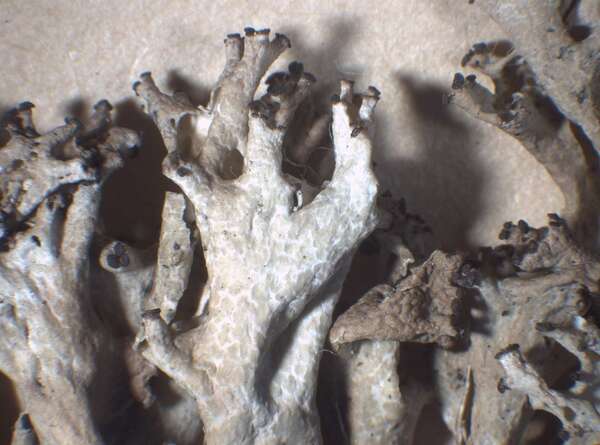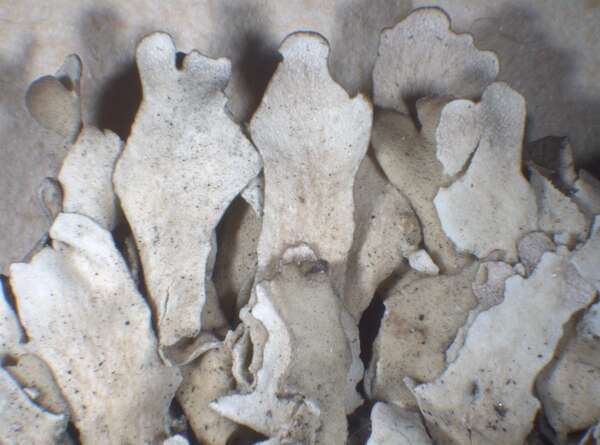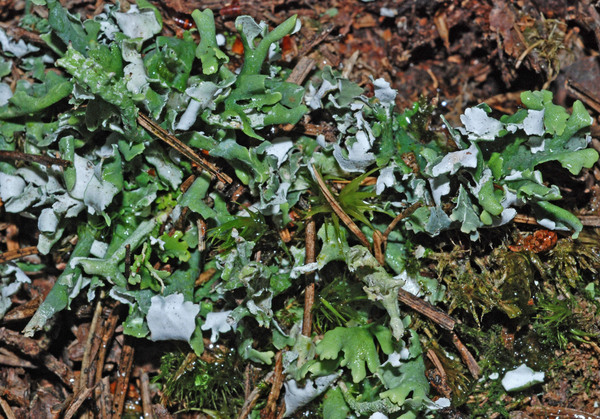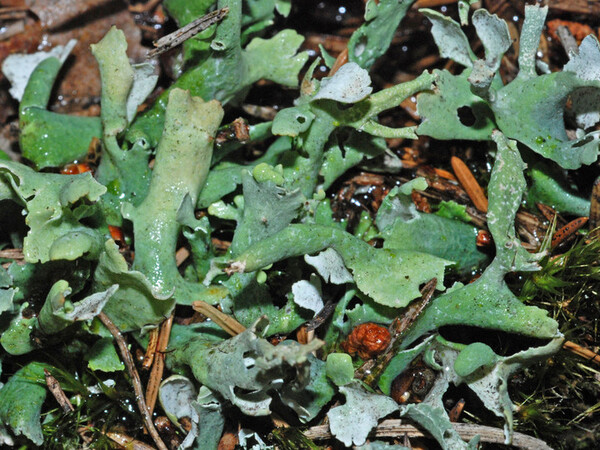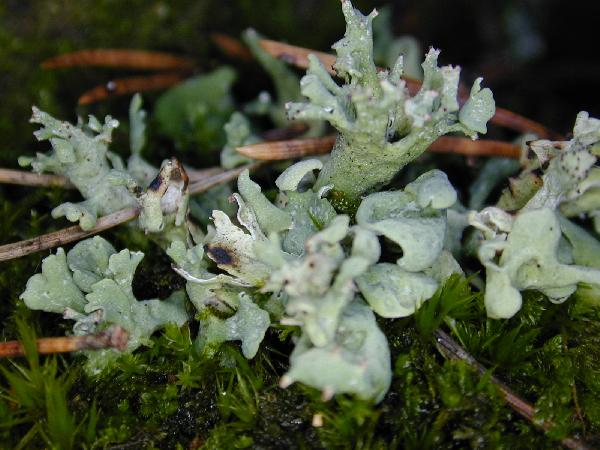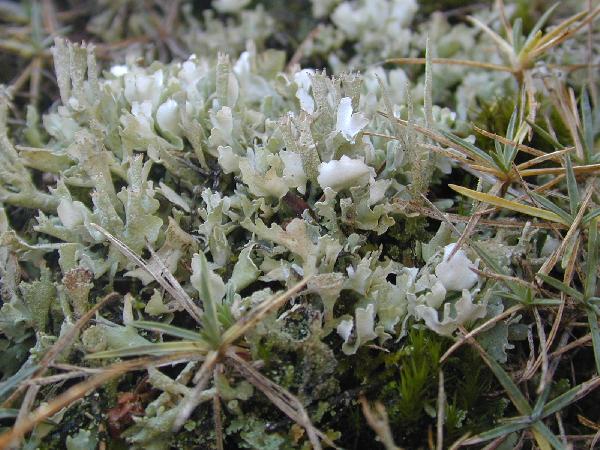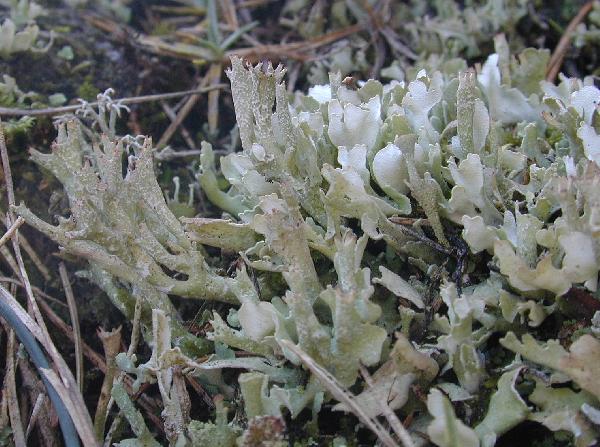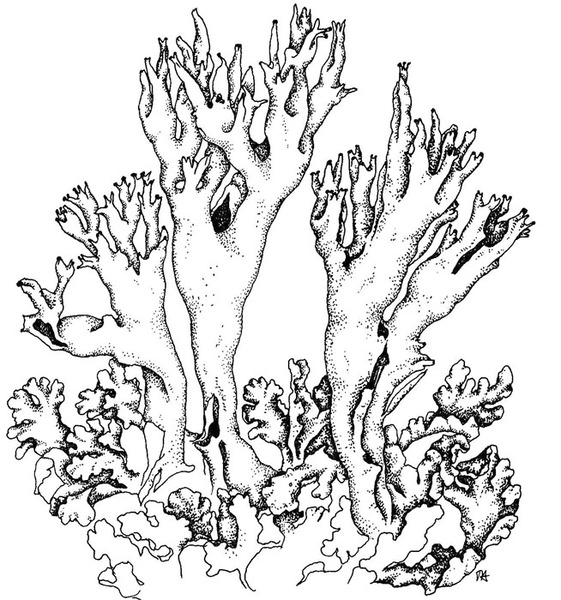Cladonia turgida Hoffm.
Deutschl. Fl., 2: 124, 1796.
Synonyms:
Distribution: N - Frl (Tretiach & Hafellner 2000), Lomb (Rivellini & Valcuvia 1996), Piem (Morisi & Sereno 1995, Isocrono & al. 2004), VA (Piervittori & Isocrono 1999), Emil (Fariselli & al. 2020), Lig (Watson 2014).
Description: Primary thallus squamulose, usually persistent, the squamules large, 0.5-2.5 cm long, 2-7 mm wide, coarse, with broad and rounded divisions, grey-green to glaucous green above, white beneath, often darkened but not melanotic at base. Podetia robust, hollow inside, greyish-green, somehow glaucescent, 0.5-7 cm tall, 2-3(-5) mm thick, simple to irregularly branched, the terminal branches usually subulate, cupless or with irregular cups, esorediate, with a smooth to areolate cortex, the areoles separated by white lines and cracks, also inside the cups. Apothecia rare, brown, convex, often clustered. Asci 8-spored, clavate, thickened at apex, with a K/I+ blue tholus and a K/I+ strongly blue outer gelatinous sheath, Cladonia-type. Ascospores 1-celled, hyaline, ellipsoid. Pycnidia common both on basal squamules and on tips of podetia, sessile, with a colourless jelly. Conidia hyaline, curved. Photobiont chlorococcoid. Spot tests: K+ yellow sometimes slowly turning brown (rarely K-), C-, KC-, P+ red (rarely P-), UV-. Chemistry: atranorin (rarely scarce or absent) and fumarprotocetraric acid (almost always present).Note: a mainly boreal-montane, circumpolar species found on more or less acid soil in open habitats, with optimum near treeline; restricted to the Alps in Italy.
Growth form: Fruticose
Substrata: soil, terricolous mosses, and plant debris
Photobiont: green algae other than Trentepohlia
Reproductive strategy: mainly sexual
Commonnes-rarity: (info)
Alpine belt: absent
Subalpine belt: extremely rare
Oromediterranean belt: absent
Montane belt: absent
Submediterranean belt: absent
Padanian area: absent
Humid submediterranean belt: absent
Humid mediterranean belt: absent
Dry mediterranean belt: absent
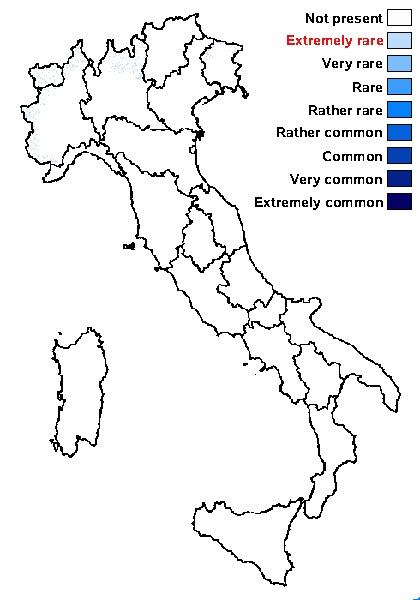
Predictive model
Herbarium samples
Growth form: Fruticose
Substrata: soil, terricolous mosses, and plant debris
Photobiont: green algae other than Trentepohlia
Reproductive strategy: mainly sexual
Commonnes-rarity: (info)
Alpine belt: absent
Subalpine belt: extremely rare
Oromediterranean belt: absent
Montane belt: absent
Submediterranean belt: absent
Padanian area: absent
Humid submediterranean belt: absent
Humid mediterranean belt: absent
Dry mediterranean belt: absent

Predictive model
| Herbarium samples |
 DOLICHENS
DOLICHENS

